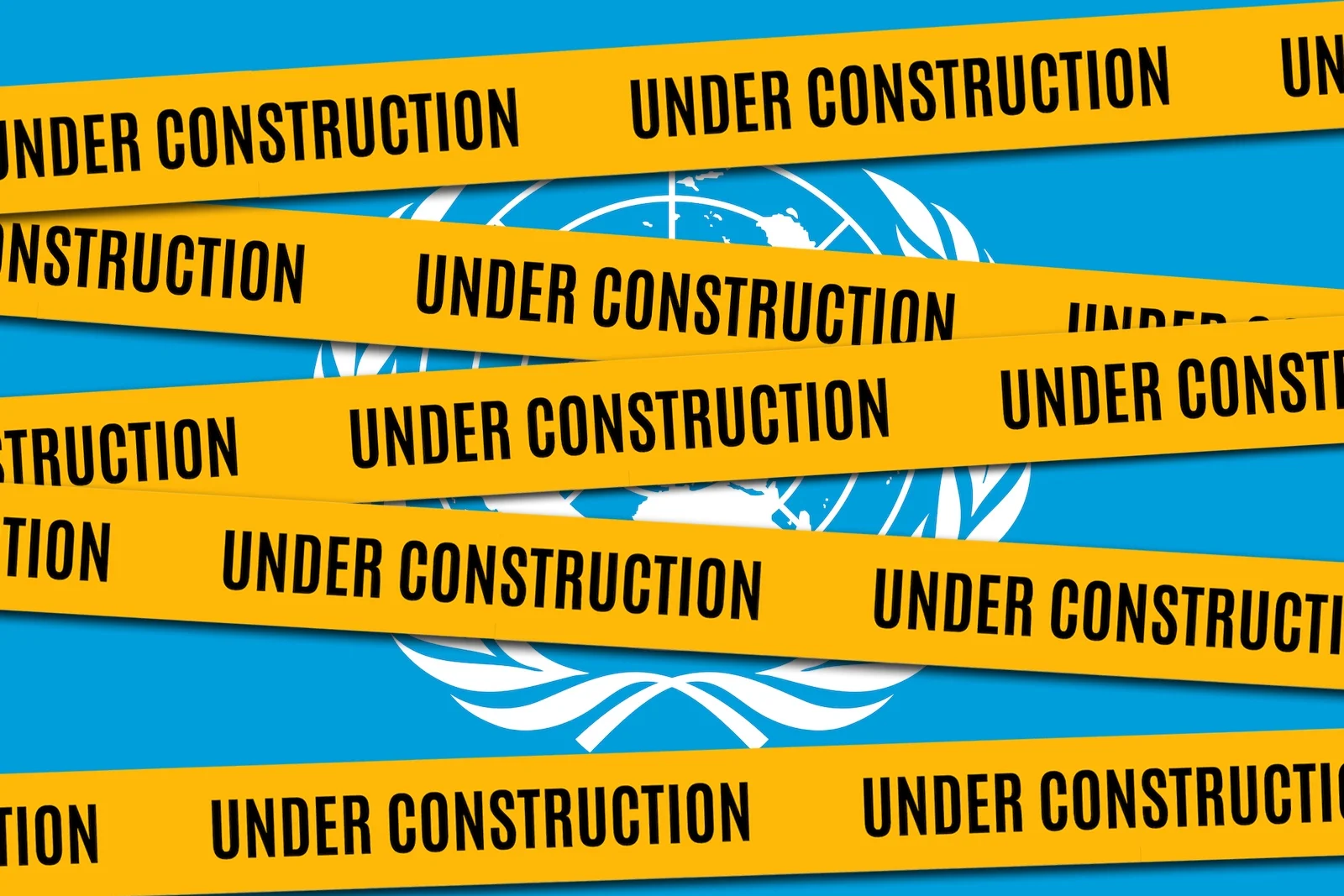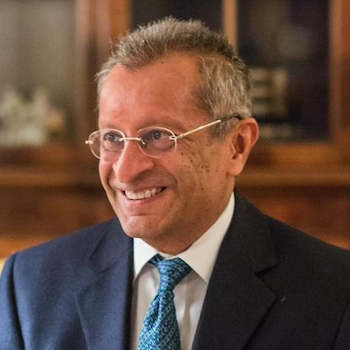
If the UN Is Dying, What Replaces It?
There are seasons when history idles and months when it races. We are living in the latter. The global order built in the long afterglow of 1945 is listing, and the world is wobbling through a transition whose destination—and cost—remain uncertain. Between the creak of aging institutions and the clang of new alignments, the question is no longer whether a new order will emerge, but what kind, and at what price.
The immediate dilemma is stark. Do we reach the next equilibrium through a convulsion, a great-power confrontation that forces a reset, or through a slower, steadier recalibration? The wars in Ukraine and the Middle East have already shown how quickly regional fires can throw sparks across borders. Some insist that a broader conflict is inevitable; wiser heads ask whether it can be contained so it does not become existential. The least-bad outcome, if there must be fighting at all, is one where violence remains localized and asymmetric rather than systemic and annihilating.
A Map in Motion
What, precisely, would a more stable order look like? The reflex answer imagines a bipolar reprise—Washington versus Beijing in a new Cold War. But the world that is taking shape looks messier and, potentially, more plural. A genuinely multipolar system is plausible, one in which different centers of gravity lead on different fronts: military power here, economic heft there, technological prowess (from artificial intelligence to cryptocurrencies) somewhere else, and the climate transition cutting across them all. In an optimistic extension of this vision, the rise of “global netizens” could begin to loosen some of the old borders of identity and interest.
However the transition unfolds, the toolkit fashioned after World War II is not fit for today’s tasks. The IMF and World Bank, perceived by many in the developing world as institutions of, by, and for the rich, have struggled to adapt, while alternative financing mechanisms are too immature to inspire confidence. No government will burn down structures that still confer power; obsolescence, not abolition, is the more likely path. Institutions will be hollowed out before they are replaced.

Look closely at the incentives and you glimpse the new logic. In business, the metric that matters is return on investment. The West poured roughly $4 trillion into the “war on terror”—with the U.S. accounting for about $3 trillion—while China invested about $1 trillion into the Belt and Road Initiative. If the scoreboard is friendship, influence, and basic economic advancement, Beijing can plausibly claim the better multiple. Recognizing that reality requires not capitulation but recalibration: a hard-headed alignment around security, technology, climate, prosperity, energy, and human empowerment that privileges outcomes over ideology.
As the center weakens, the periphery organizes. Expect more power to migrate from jammed, universalist bodies to coalitions that are smaller, more coherent, and more transactional. On one side sit groupings such as the G7, NATO, AUKUS, and the European Union; on the other, an expanding SCO, BRICS, ASEAN, and the Belt and Road network. Layer atop these the African Union, the Gulf Cooperation Council, and the Commonwealth, and the geometry grows complex: not blocs so much as overlapping Venn diagrams with different agendas and time horizons. The competition among them will feel less like a single chessboard than many games played at once. For now, the advantage may tilt toward a globalizing South that bargains hard across issues, while much of the North clings to nationalist reflexes.
The UN’s Triple Crisis
Nowhere is the mismatch between mission and moment clearer than at the United Nations. Born of postwar idealism in October 1945, the UN increasingly speaks at a frequency the world does not hear. The wars in Ukraine, Gaza, and Sudan have mocked the Charter’s promise, and on the worst days, the UN looks less like a convening authority than a witness to the triumph of might over right.
Criticism of Turtle Bay is hardly novel. American conservatives have long derided it as a brake on U.S. power, too solicitous of the Global South and cosmopolitan causes. Many in the developing world see the inverse: a system skewed toward the West, patronizing in its prescriptions and selective in its outrage. Add a reputation for baroque bureaucracy, and the result is an institution ill-suited to a world that moves at platform speed.
Yet even at the recent 80th session of the General Assembly, the mood was one of autopilot—rhetoric without reckoning. Even Pope Leo XIV has joined the chorus of skeptics. At the core sits the UN Security Council, frozen by great-power vetoes. Russia’s full-scale invasion of Ukraine in 2022 shattered the taboo against redrawing borders by force and paralyzed the Security Council, where Moscow sits beside Washington, Beijing, London, and Paris with a veto that can nullify consensus. And now, a combatively unilateralist United States, once again under the corrupting influence of President Donald Trump, has been content to undercut multilateral prescriptions when they conflict with an America-First dealmaking approach.
At eighty, the UN faces crises within and without. Internally, two decades of eroding authority, capability, and field impact have dulled its relevance, especially for the poorest and for civilians in conflict zones who most need impartial relief and mediation. Externally, the return of great-power rivalry has produced a Security Council paralysis not seen in half a century. And beyond the chamber doors, would-be competitors from BRICS to regional compacts backed by the Global South, along with stakeholders in Europe, are offering alternative venues for diplomacy and development finance. For the UN, this triple challenge is existential.

Can It Be Saved?
Optimists spy opportunity in the wreckage: a chance to rebuild a leaner, more focused UN that hews to its founding purpose of preventing war and advancing dignity. Pessimists recall the League of Nations, which withered on the sidelines as the world stumbled toward catastrophe. The truth is more prosaic. Rescue is possible, but only with political will, and not by resuscitating the UN of old. What is required is a structure that matches today’s distribution of power and today’s problems, with a mandate narrowed to what only a truly global body can do.
The Secretary-General’s “UN80” initiative sketches a starting point: cut the $3.7 billion Secretariat budget by 20%, eliminate nearly 7,000 posts, review more than 3,600 mandates for redundancy, and consolidate overlapping agencies. The drivers are no mystery: donor fatigue; arrears of roughly $2.4 billion (about $1.5 billion owed by the United States); and deep skepticism about relevance in the face of Security Council gridlock. The obstacles are equally plain. Great powers rarely back reforms that dilute their leverage.
Any structural renovation must clear the highest political bar: 193 member states, with the United States as first among not-equals. Washington shaped the UN at birth and has long been its principal funder, even as successive administrations have chafed at its constraints. The double standard is an old story—invoking the Charter when convenient, working around it when not. What is new is the extent to which the wider “rules-based order” has frayed, and how an America-First, deal-driven approach has pushed the relationship toward breaking point.
Gradualism, Not a Big Bang
If the UN forfeits moral authority and diplomacy devolves into a free-for-all, the world will have to muddle through by degrees. Gradualism is not romantic, but it buys time—for competing powers to test their theories of order against reality; for networked publics to press for problem-solving over posturing; for coalitions to coalesce around the few nonnegotiables that still bind us. Nuclear nonproliferation remains an imperative. So does climate mitigation and adaptation. So does cooperation on resource scarcity and energy security.
The better future is not preordained. It will be built, imperfectly, out of incentives and constraints: a UN lean enough to coordinate where only a truly global body can; regional and functional coalitions empowered to act where they have comparative advantage; financing that rewards development over dependency; and a diplomatic culture that prizes outcomes over performances. That is not the return of a golden age. It is the workmanlike politics of a multipolar world—less about tidy architecture than about the operating systems that allow different nodes to collaborate despite profound disagreement.
History is accelerating again. The old house is creaking; the scaffolding for a new one is going up even as the weather worsens. We should be clear-eyed about what is collapsing and pragmatic about what can still be saved. The UN may indeed be in its death throes. The more urgent task is to ensure that, when the new order arrives, it is less violent, more just, and sturdy enough to last.
